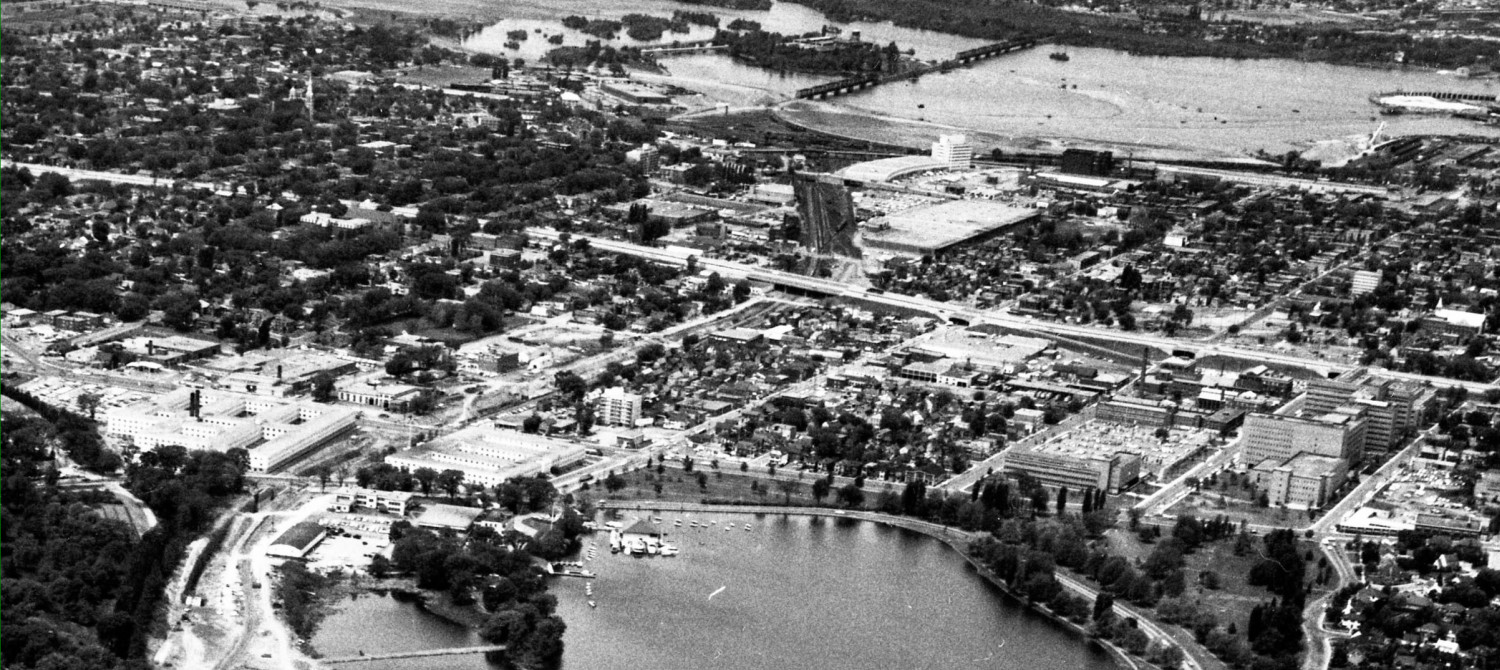I checked out this bi-directional bike track in downtown Seattle. It is separated from other vehicles by a poured curb, which in turn was interrupted by breaks to allow for water drainage and driveway access.
|(above) the pavement was painted green at private driveways to businesses, not just at intersections, like the Laurier bike track here.
above: a whole block painted green, with car parking on the outside edge of the track, with a painted spacer to reduce dooring and motor car passengers stepping out in front of cyclists. I don’t know why the launching point on the far side of the crosswalk is black asphalt. I find the lack of standardization in cycle and road markings somewhat frustrating. I realize we are evolving, through trial and error, to a comprehensive set of cycling signals, \i just hope I’m one of the survivors to the new world order.
in the above picture, the bidirectional track runs left-right across this side street. I am used to seeing a “launching pad” for cyclists positioning themselves for a two-stage turn, but this double entry launching pad took me by surprise. Cyclists approaching from the right, wishing to make a right turn across the intersection using a two stage turn, have to cross the opposing track and then position themselves on the pad. Obvious room for an accident… but I didn’t see any close calls, mostly because the cyclists swung directly from their bike track over the intersection to their right, while on their green, ie a typical single-stage right turn but made from the track position (near the curb) NOT from the centre lane. Looked dangerous to me.
Bike signal, mounted high up, with typical watch for crazies, err, cyclists … signage.
Public transit patrons utilizing the shelter shown above, step out from the curb onto and island occupying what is elsewhere the parking lane. Crossing at a controlled point, shown with zebra stripes, is encouraged by the presence of discrete fencing to demark the island and cycling track. Transit users also accessed the crosswalk from the end of island as the fence at the far end of the island was short, simply to prevent people from stepping out onto the track at an angle. Peds had to step onto the crosswalk, turn 90 degrees, then cross the road or track at true right angles, not a diagonal. Useful.
the pedestrian access to the island is level with the sidewalk and island, and forms a raised intersection point for cyclists. The crossing is concrete, a further distinction from the asphalt track.
Simple curb-edge signage reminds pedestrians to Look both ways.
Further up the block, in front of the attractive mid-rise infill project of the type Ottawa tries so hard to prevent/avoid, the parking lane was separated from the track with sculptural elements.
When set between marked parking spaces, they do not impede car doors. But the spacing seemed random, and some did block passenger doors from opening. Perhaps people move them around – they were made of hollow plastic, like kids toys, with a fill lid on top for water or sand to weight them down. Hitting them with a vehicle or door wouldn’t be fatal either:
Personally, I think downtown Ottawa would be improved by the employment of artistic turds like those in Seattle, but I guess we would have to have them in Liberal red and knee dipper orange too. And just one in green.














This is great Eric! I dearly hope we can start moving toward bi-directional on-street bike tracks like this – or the ones in Montreal – as opposed to single track outer lanes like Laurier or the design for post-LRT Scott Street. It just makes more sense.